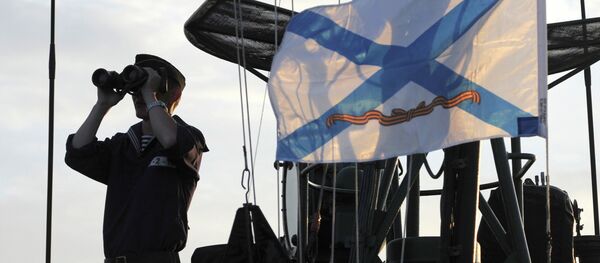"The goal of the exercises was to drill the Podsolnukh radar system's interaction with the warships' command posts during the detection of air and surface targets," the press service said.
In the course of the drills, the Podsolnukh tracked the four low-flying frontline Su-24 bombers and transmitted their whereabouts to the guided missile frigate Dagestan, which was based in the Caspian Sea. Shortly after, the warship 'destroyed' the air targets.
In addition to the Dagestan, the missile patrol ships Grad Sviyazhsk, Uglich, and Veliky Ustyug also took part in the drills.
An over-the-horizon radar is a type of radar system with the ability to detect targets located at very long ranges, typically hundreds to thousands of kilometers beyond the radar horizon, which is the distance limit for an ordinary radar.
The Caspian Flotilla joined Russia's strikes against Daesh (ISIL/ISIS) on October 7, 2015, when the Dagestan, the Grad Sviyazhsk, the Uglich, and the Veliky Ustyug fired 26 rockets at terrorist targets.
On November 20, 18 cruise missiles were launched by the flotilla and hit targets in the Daesh capital of Raqqah, as well as in Idlib and Aleppo, according to Russia's Defense Minister Sergei Shoigu.





